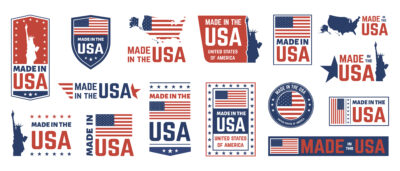
Introduction:
In recent years, the global landscape has witnessed unprecedented challenges that have reshaped the way we view the world and highlighted the importance of resilient supply chains. As we navigate through the complexities of a rapidly changing environment, one key aspect emerges as a cornerstone of economic strength and national security—domestic manufacturing. In this context, manufacturing personal protective equipment (PPE) in the United States not only safeguards public health but also provides a myriad of benefits to working people, local communities, and the overall economy.
- Strengthening the Local Workforce:
One of the primary advantages of manufacturing PPE in the United States is the positive impact on the local workforce. The process creates jobs at various skill levels, from highly specialized roles in research and development to assembly line positions, providing a diverse array of employment opportunities. These jobs contribute to reducing unemployment rates and fostering economic stability, empowering individuals and families across the nation.
Additionally, manufacturing PPE domestically promotes skill development and technological innovation. The need for highly skilled workers stimulates education and training programs, ensuring that the workforce remains competitive in an ever-evolving global economy. This not only addresses unemployment but also enhances the nation’s overall productivity and competitiveness on the world stage.
- Community Resilience and Economic Growth:
Local communities play a pivotal role in the success of any manufacturing initiative. When PPE is produced domestically, communities benefit from increased economic activity, leading to improved infrastructure, healthcare, and education. As manufacturing plants become integral parts of these communities, they foster a sense of pride and solidarity among residents.
Furthermore, a robust domestic manufacturing sector acts as a buffer during times of economic uncertainty. By reducing reliance on foreign suppliers, local economies are better equipped to weather global disruptions, ensuring a more resilient and self-sufficient nation. This resilience extends beyond economic stability, influencing the overall well-being of communities and fostering a sense of security and confidence in the future.
III. Supply Chain Resiliency and National Security:
The COVID-19 pandemic underscored the vulnerabilities of global supply chains, particularly in the healthcare sector. Relying on foreign sources for essential PPE revealed the fragility of these systems and prompted a reevaluation of the importance of domestic manufacturing.
Manufacturing PPE in the United States enhances supply chain resiliency by minimizing the risk of disruptions due to geopolitical tensions, natural disasters, or global pandemics. A diverse and robust supply chain ensures a steady flow of essential goods, reducing the vulnerability of the nation to external shocks. This, in turn, strengthens national security by ensuring that critical resources are readily available during times of crisis.
- Environmental and Sustainability Considerations:
Beyond economic and security advantages, manufacturing PPE in the United States aligns with sustainability goals. Local production often adheres to higher environmental and ethical standards, reducing the carbon footprint associated with transportation and ensuring responsible sourcing of materials.
Domestic manufacturing allows for greater oversight and control over production processes, enabling companies to implement environmentally friendly practices. This commitment to sustainability not only benefits the planet but also resonates with consumers who increasingly prioritize ethical and eco-friendly products.
Conclusion:
In conclusion, the benefits of manufacturing PPE in the United States extend far beyond the immediate concerns of public health. By strengthening the local workforce, empowering communities, enhancing supply chain resiliency, and promoting sustainability, domestic manufacturing becomes a cornerstone for building a more resilient, secure, and prosperous nation. As we continue to navigate the challenges of the 21st century, investing in domestic manufacturing, particularly in critical sectors like PPE, is not just a strategic move; it’s a commitment to the well-being and future prosperity of the United States.

